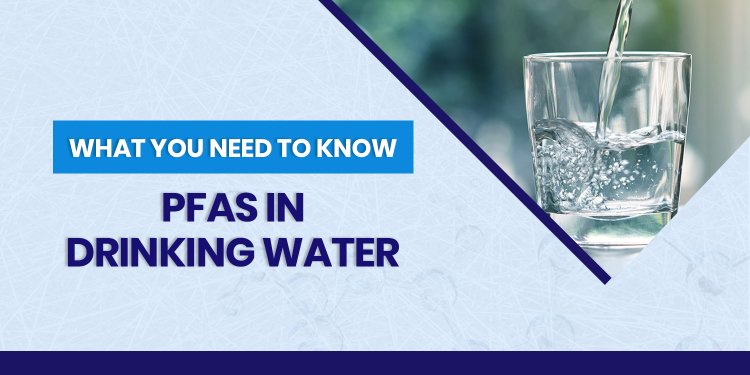What You Need to Know About PFAS in Drinking Water
Learn about PFAS chemicals in drinking water, their potential health risks, sources of contamination, and how to reduce exposure for safer, cleaner water.
Share this Post to earn Money ( Upto ₹100 per 1000 Views )

PFAS, or per- and polyfluoroalkyl substances, are a group of human-made chemicals that have become a growing concern in public health and environmental safety. Known as “forever chemicals” due to their resistance to degradation, PFAS can persist in the environment—and in our bodies—for decades. One of the most pressing concerns today is the presence of PFAS in drinking water, which has raised alarms across communities, regulatory agencies, and researchers alike.
What Are PFAS and Why Are They Harmful?
PFAS have been used in a wide range of industrial and consumer products since the 1940s, including non-stick cookware, stain-resistant fabrics, firefighting foams, and food packaging. The problem? These chemicals do not easily break down, and over time, they accumulate in the environment and the human body.
Scientific studies have linked PFAS exposure to several health issues, including:
-
Hormonal disruption
-
Immune system suppression
-
Increased risk of certain cancers
-
Liver damage
-
Developmental delays in children
Because PFAS are so pervasive, they can enter the water supply through industrial discharge, landfill seepage, and runoff from sites where PFAS-containing products are used.
How Widespread Is PFAS in Drinking Water?
Recent testing by the U.S. Environmental Protection Agency (EPA) and independent organizations has found PFAS in drinking water across numerous states, sometimes at levels far exceeding recommended safety thresholds. In fact, a 2023 study found that nearly half of the U.S. tap water supply contains detectable levels of PFAS.
Communities near industrial areas, military bases, and firefighting training sites are particularly vulnerable. However, due to PFAS’ ability to travel long distances in groundwater and air, even remote regions are not immune.
What’s Being Done?
Recognizing the severity of the issue, the EPA has proposed national drinking water standards for six key PFAS chemicals. Several states have already implemented their own regulations to limit PFAS exposure, but enforcement and testing vary widely.
In response to growing demand for clean water, innovative solutions are being developed. Traditional water treatment methods are often ineffective at removing PFAS. However, advanced filtration technologies—such as nanofiber membranes are emerging as powerful tools in PFAS mitigation.
How Matregenix Is Addressing the PFAS Challenge
At Matregenix, we specialize in high-performance nanofiber filtration solutions designed to target and capture ultra-fine contaminants like PFAS. Our proprietary nanofiber technology offers a scalable, efficient, and sustainable way to reduce PFAS in drinking water systems.
Unlike conventional filters, our nanofiber membranes can be engineered to selectively remove specific chemical compounds while maintaining high flow rates and durability. Whether for municipal treatment plants or point-of-use systems, our solutions are helping communities protect their most vital resource clean, safe water.
Final Thoughts
The presence of PFAS in drinking water is a serious and complex issue, but it is not insurmountable. Awareness, regulation, and advanced technology are key to addressing the problem. At Matregenix, we are committed to leading the charge in water purification innovation and ensuring that everyone has access to safer, healthier water.

















